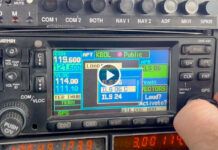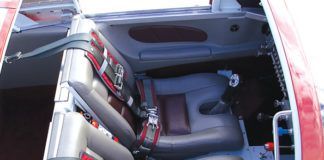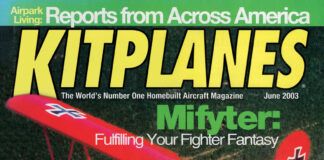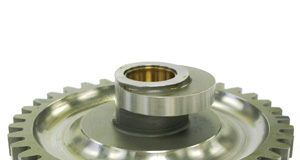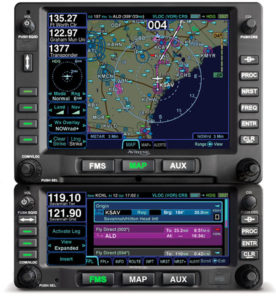
For many years now, having an IFR-capable navigator has meant installing and using a Garmin GNS 430, 530, or their WAAS versions that end in a “W.” Other products have existed, of course, but market penetration has been slim. The nearly ubiquitous Garmin 430W appears in so many cockpits that it is almost assumed that pilots know how to use them. In homebuilt aircraft that are equipped for IFR use, it is rare to find anything else – and if you leaf through the various popular EFIS installation manuals, most of them show exactly how to hook up the EFIS to a 430W.
Garmin has, of course, come out with a more modern IFR Navigator – the GTN series – and has stopped selling (although it still supports) the 430/530 series of equipment. Those who understand the electronics market know that once a company stops selling a product, there is going to come a time in the future when support will become difficult or impossible – for those products. In the case of the Garmin, the GTN series is an excellent, modern upgrade from the GNS series – but in order to take advantage of the new technology, a new rack and wiring need to be installed – not a trivial undertaking for most builders. This has left a large installed base of GNS navigators, and owners wondering what they will do when support becomes difficult.
Enter the new Avidyne IFD 440 – a slide-in replacement for the Garmin 430W. By slide-in, I mean just that – you take out your Allen key, remove the old unit, slide the new one in, tighten with the Allen key, and apply power. Voilà – you now have a touch-screen WAAS navigator that allows enroute and approach navigation and gives you a fast and easy alternative to the GTN.
We slid a 440 into one of our panels and have been flying with it now for about two weeks. Installation was as simple as promised – we used our cell phone camera to capture the configuration screens of the 430W before removing it from the rack, then brought up the configuration screens on the 440 to transfer the airplane’s configuration to the new box. Avidyne has kept their configuration pages virtually identical to those on the Garmin, so it was a simple matter of flipping pages on the unit and looking at the cell phone pictures to match configurations. Within minutes, the unit was set up to work with our airframe.
For pilots familiar with inner and outer knobs for data entry, flying with the Avidyne takes no effort at all. We advise a few minutes of practice on the ground with frequency selection (this is, after all, your primary Comm radio). A little time spent with the outstanding (free) iPad App that simulates the Avidyne will give you the basics of navigation. We were up and flying approaches with the unit in short order – it was that quick to learn. They have retained the best of what works, and added features like easy Airway navigation, a real “FMS” interface, and a user interface that relies on just a few buttons and lots of intuitive touch spots.
We’re still learning the full capability of the unit, and look forward to trying out the Bluetooth keyboard that will allow direct keyboard entry of just about anything you can touch-type into the FMS. We’ll be giving a full report on the unit in a future issue of the magazine, but right now, we consider it to be a viable choice for those looking to the easiest possible upgrade to their 430W. Stay tuned for more!








